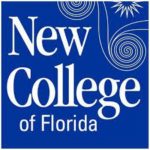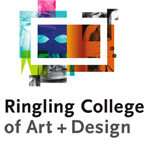
Florida has some incredible small colleges, just not very many. Here you will find the five best small colleges in the state of Florida. The best of them can compete with the best small colleges in the nation. There aren’t many small colleges in the state that are good enough to be considered among the best. But the schools we feature in this ranking all offer quality, unique educational opportunities to their students. The school ranked #1, New College of Florida, may be the most affordable, and one of the most accessible, nationally ranked liberal arts colleges in the country for in-state students. There’s also a school featured here that is designed specifically to meet the needs of students with learning disabilities and disorders.
So while there aren’t very many schools to choose from in this ranking, it’s definitely worth checking out the schools that made it in.
Ranking the Best Small Colleges in Florida
#1. New College of Florida
Score: 100
New College of Florida is a nationally ranked public liberal arts college with a 7:1 student/faculty ratio. It has an undergraduate population of just 726 students. The in-state (and even out-of-state) tuition is incredibly affordable compared to that of similar private liberal arts colleges. In addition to being less expensive, New College of Florida is much more accessible than many of those private liberal arts colleges. It accepts around 76% of applicants. The school offers 45 majors and provides students the tools they need to create their own multidisciplinary course of study.
- U.S. News Ranking: National Liberal Arts #84
- 20yr Net Return on Investment: $320,000
- Tuition: $6,916
- Graduation/Transfer Rate: 93%
#2. Webber International University
Website
Score: 88.19
Webber International University was founded in 1927 as a business school for women. It transitioned into a coeducational institution later. Webber has students from 48 different nations. Their campus in Babson Park has 665 undergraduate students and a 24:one student/o-faculty ratio. Webber admits roughly 42% of applicants. The school offers 17 on-campus bachelor’s degrees and six online bachelor’s degrees.
- U.S. News Ranking: Regional #70
- 20yr Net Return on Investment: $231,000
- Tuition: $28,268
- Graduation/Transfer Rate: 80%
#3. Johnson & Wales University
Website
Score: 51.45
Johnson and Wales University has campuses in:
- Charlotte
- Denver
- Providence
- Miami
Some programs are online. Courses are offered through the colleges of:
- arts and sciences
- business
- engineering and design
- food innovation and technology
- health and wellness
- hospitality management
- online education
Students will also be able to engage in 40+ study-abroad programs if they are interested in spending some time studying in other countries. Check with the north Miami campus to see what options are available to you!
- U.S. News Ranking: Regional #96
- 20yr Net Return on Investment: $101,000
- Tuition: $34,376
- Graduation/Transfer Rate: 52%
#4. Beacon College
Website
Score: 49.79
This small Florida college has a student/faculty ratio of 10:1 and an undergraduate population of just 416 students. Beacon is designed from the ground up to assist students who learn differently. Beacon provides the support needed for students with:
- dyslexia
- ADHD
- autism spectrum disorder
- and other issues that create unique challenges when these students are in learning environments designed for neurotypical students.
- U.S. News Ranking: Regional #31
- 20yr Net Return on Investment: N/A
- Tuition: $42,900
- Graduation/Transfer Rate: 73%
#5. Ringling College of Art and Design
Website
Score: 42.60
The ethos of an artistic approach to learning runs through the core philosophy of education at Ringling College of Art and Design. Instead of learning art academically, the focus is on learning art through an artistic lens. You won’t always find this approach at more traditional colleges, even in their art programs. At Ringling, students can major in:
- business of art and design
- creative writing
- film
- game art
- illustration
- photography and imaging
- visual studies
- computer animation
- entertainment design
- fine arts
- graphic design
- motion design
- virtual reality development.
- U.S. News Ranking: Unranked
- 20yr Net Return on Investment: $146,000
- Tuition: $49,540
- Graduation/Transfer Rate: 67%
Frequently Asked Questions
Why are there so few schools in your ranking?
Well, we evaluate schools based on four criteria, but there are also minimum standards. A school must have data available in at least three out of four of the categories. This is where many of the exclusions came from. There just weren’t enough schools with all the data we needed to determine whether or not they deserved a slot. We also immediately eliminate any school without a combined graduation/transfer rate of at least 50%. This is because if students attending this school have less than a 50% chance of graduating, we can’t consider it a school worthy of your attention. We want to feature schools that help and support their students successfully.
We also don’t include schools that have a negative 20 year net ROI, according to payscale. This is because if, on average, students lose money by attending the school, it’s just not a great deal. Unfortunately, many of the small colleges and universities in Florida ended up being eliminated based on one of these requirements. So the ranking ended up shorter than our average rankings. But that doesn’t take anything away from the schools that did make the list. In Florida, these small colleges are the cream of the crop.
How do I afford college?
Well, the first step, if you live in Florida, is to attend the New College of Florida. Did you see that tuition? You don’t find better in any nationally ranked liberal arts college, much less one ranked in the top 100.
But on a more serious note, there are a lot of ways to better afford college. Attending a local community college is a great option if you can live at home for free while you do it. It can save you thousands on student loans. It’s also a great way to rehabilitate poor high school grades. Do two solid years at a community college and you can probably transfer into any state college or university. So community college is a great choice for students looking to save some cash.
FAFSA is also essential, no matter where you’re going to school. Get your FAFSA application submitted early. Apply to as many schools as you can/are interested in, and then take the best financial aid package you’re offered. Small colleges often offer better merit- and need-based financial aid packages.
What is return on investment, and why is it important?
The 20 year net ROI is an estimate. It’s based on the average report from graduates from the university in question, of how much more money the student will make than if they hadn’t attended college. So basically, take how much graduates make on average over the next 20 years. Then subtract the average cost of the college after financial aid. Subtract the average amount somebody without a degree could earn over those four years. Then see if graduates come out ahead or behind. With most colleges in the U.S., students come out at least a little ahead.
This is important, because it’s easy to accidentally attend a college that doesn’t do so well in helping its students or supporting them properly. Attending a college with a low ROI is not a guarantee you will make less money, however. A lot of that comes down to you and your choices:
- what you major in
- how well you perform in your classes
- how ambitious you are
- how much initiative you take all factor into your success.
Some professions also make more than others. This includes professions in STEM:
- science
- technology
- engineering
- mathematics
So the focus of a university can affect the ROI numbers of the graduates. Unfortunately, a school full of social workers is never going to have as high a return on investment as a school full of engineers.
Methodology
Each category is weighted as follows.
Tuition: 10%
Graduation Rate: 30%
Return on Investment: 30%
National Ranking: 30%
Regional Ranking: 20%
For the national and regional scoring categories, they can only apply to one school at a time. Regional rankings are scored at ⅔ the value of national rankings. This is because the schools only compete against a smaller pool for those rankings, limited to schools in their specific region that are not already nationally ranked.
For tuition, the points are awarded according to how much less a given school’s tuition is compared to the most expensive school in the entire pool of schools considered. This is even if the most expensive school in the pool did not make it into the final ranking.
With this methodology, no school can score 100 because no school has $0 tuition or 100% graduation rate. Once all the schools’ points are calculated, the top school is curved to a score of 100. Then each other school’s score is curved up by adding the same percentage of its own score to its score as the percentage of the top school’s score that was added to the top school’s score to achieve a ranking of 100.
College ROI: Payscale
U.S. News Rankings: U.S. News and World Report
Tuition and Graduation Rate: National Center for Education Statistics
Other articles of interest:
- 20 Deals: Small Colleges for Environmentally-minded
- 50 Best Deals on Competitive Small Colleges
- Top 10 Deals on Small Colleges in Texas
- Top 50 Best Colleges in Texas
- 20 Best Deals: Small Colleges for Athletic Types
- 20 Highest Paying Bachelor Degrees
GCD Staff
May 2021



